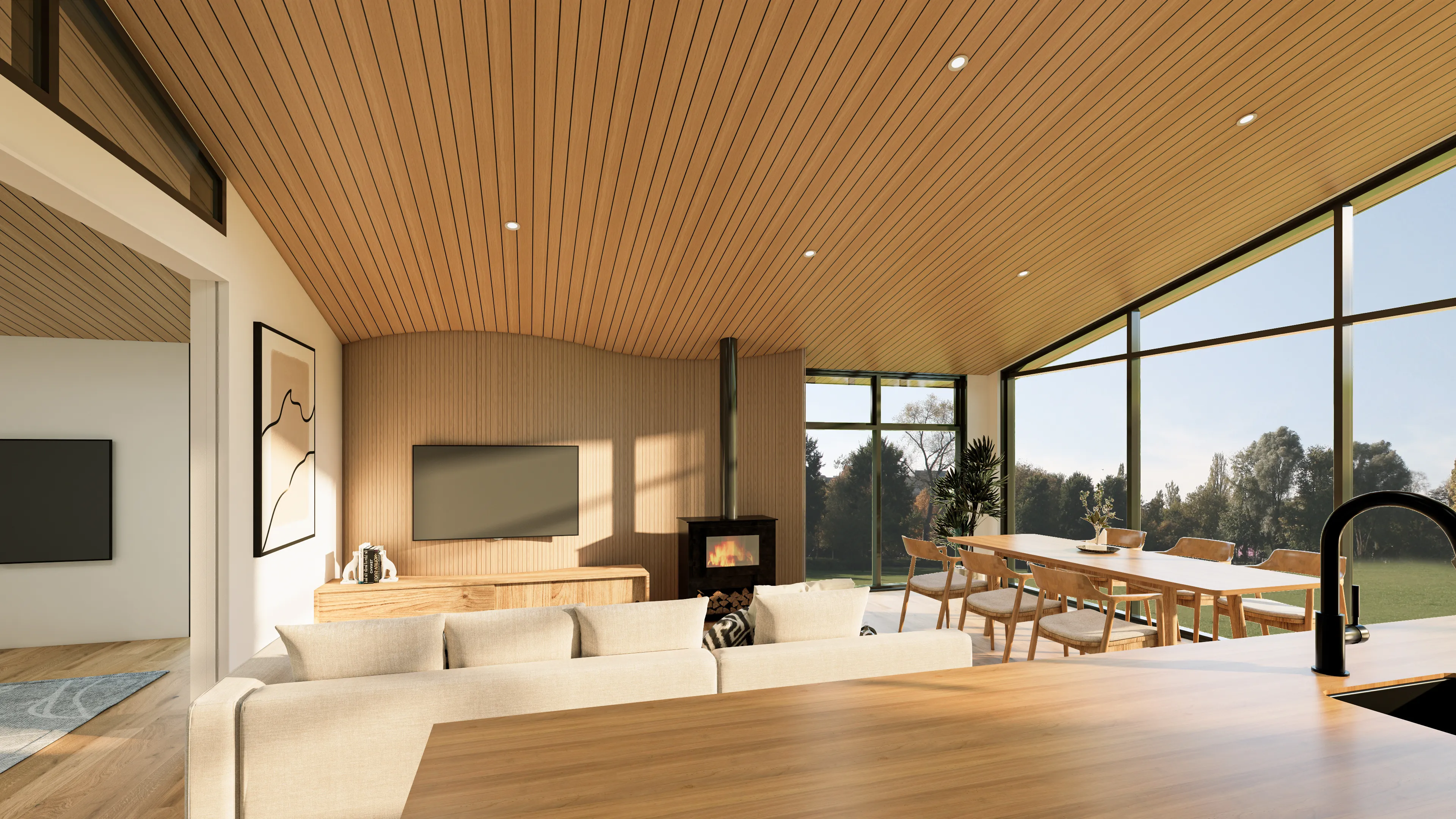At ID Architecture, when we design a home it's not just about aesthetics; it's about enhancing the functionality, mood, and overall well-being of those who occupy a space. In this blog post, we'll delve into design tips and trends we’re noticing this year!
Sustainability
- Passive and high-performance houses: Designs that maximise thermal efficiency, airtightness, and insulation—often modular and prefabricated—reduce energy use and support wellbeing.
- Energy Efficiency: Harnessing natural light reduces the need for artificial lighting, which, in turn, can lower energy bills and decrease a building's environmental footprint. Sustainability and energy efficiency are core principles at ID Architectures. (Read more on our love for natural lighting HERE
Connected Design
- Indoor‑outdoor harmony: Large windows, green roofs, planted walls, water features, and native flora bring nature inside. This isn’t just a look—it supports mental health and reflects Kiwi values.
- For example we can’t wait to see how our Oxenhope design blends with its surroundings in Sumner
- Read more on indoor-outdoor flow in our other blog HERE
Flexible, Multi‑Functional Design
- Adaptive living spaces: With remote/hybrid work here to stay, homes are being designed for flexibility—sliding walls, retractable furniture, Murphy beds, hidden storage for dual-purpose rooms.
- Support for multi‑gen households: Planning for family inter-generational living with accessible, energy-efficient and expandable layouts is rising.
- For example our latest design, Painters Road, is built for a growing family in mind - the design caters for a young family, while also keeping everything accessible for the future (think seating in the shower, that kind of thing!)
Regulations
- Building code updates: The NZ Building Code now mandates stricter energy efficiency, seismic resilience, and carbon assessment requirements. Compliance tools like NZS 3604 remain central.
Practical Tips from ID Architecture
- Design around regulation: Ensure your plans align with the NZ Building code, height limits, outdoor space requirements and new multi-unit rules.
- Prioritise passive principles: Orient buildings to optimise solar gain in winter and shading in summer; seal and insulate thoroughly; use double-glazed thermally broken windows.
- Choose smart local sustainable materials: Partner with local suppliers and reuse/regenerate timber where possible.
- Create flexible spaces: Incorporate design elements that let rooms adapt for sleeping, working, relaxation, and wellness.
- Design mindfully of site and climate: For coastal or hilltop homes, use low-profile forms, wind-resistant courtyard layouts, and native planting to anchor the building in place and context.
At ID Architecture, our goal is to deliver projects that are beautiful, future‑proofed,, affordable, and technically compliant. For design guidance —both physical and regulatory—you can rely on our expertise.
Let us help you create homes that are sustainable, resilient, meaningful, and distinctly Kiwi.
References & Further Reading
- Architectural design process and regulatory overview in NZ 2025 (Sonder Architects)
- Interior and material trends in NZ 2025 David Reid Homes)
No items found.






